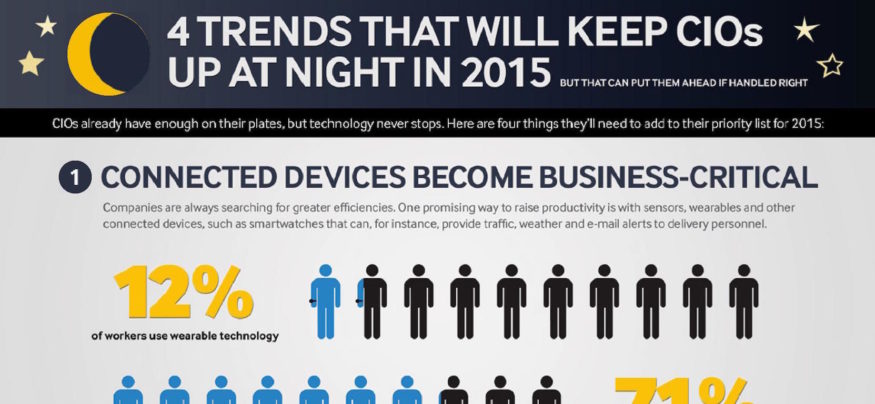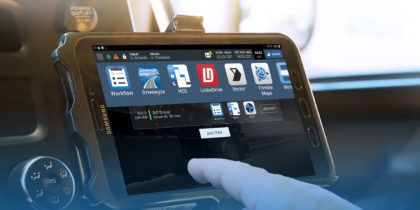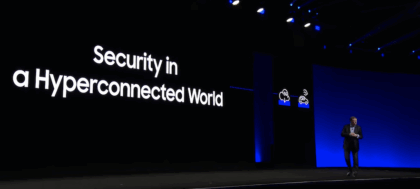Recent developments in technology are creating new opportunities for CIOs to add value to their businesses by unlocking information in new and innovative ways. Today, CIOs have the opportunity to lead their businesses to embrace the Internet of Things (IoT), defining how the IoT can be utilized to improve processes and to enhance the customer experience. As connected devices enter the workplace, forward-thinking CIOs will work to integrate this non-traditional technology into their existing infrastructure, establishing policies that provide a secure yet open environment. Here are some major technology advances that should be flagged as key priorities for CIOs in 2015.
Wearable Devices Increase Efficiency
Connected devices, from smartphone and tablets to wearables, are proving to be a great solution for increasing productivity. Such devices are useful in a wide range of situations, such as allowing for hands-free communication with customers and providing traffic information to delivery drivers. According to a 2014 survey conducted by Kelton, 12 percent of workers already use wearable technology, and 71 percent of them say their use has boosted productivity.
Through a partnership with SAP, Samsung is developing solutions to utilize wearables within a variety of industries. In retail, for example, wearable devices can be used to provide staff with immediate access to information about inventory, which increases sales and improves the customer experience. In the healthcare industry, wearables can personalize the way in which electronic health records are managed and accessed. Though the role of wearable devices in enterprise is still being defined, it’s clear that they are putting new capabilities into the hands of workers to access information in a fast, convenient way.
The Internet of Things Is a Force to Be Reckoned With
Wearable devices form just a small part of the Internet of Things, which, according to a 2015 report from Gartner, comprised 3.9 billion connected devices in 2014. This number is expected to grow to 25 billion devices by 2020, an average growth rate of 35 percent year over year.
In a 2015 study from Tripwire, 24 percent of employees say that they have already connected an IoT device to their enterprise network. The increase in devices that are connected to a corporate network introduces a host of security vulnerabilities. In order to truly embrace the IoT while maintaining high standards for data security, CIOs will need to ensure that mobile security policies are updated to reflect all devices that connect to the network. Employees should then be educated on the new policies in order to mitigate the risk of a data breach.
Big Data Can Be Hard to Process
The use of devices connected to the network will do much to unlock information in the enterprise, but it will also add to the massive volumes of data that organizations need to deal with. According to a survey published in 2014 by Gartner, 51 percent of CIOs state that they are unsure of how to cope with the big data phenomenon, owing to the speed with which data volumes are growing. Throughout 2015, they must focus on developing and implementing a comprehensive plan for collecting, processing, storing and using all the data they have available to them, including the massive amount of data generated by connected devices.
Security Professionals Will Be in High Demand
According to a 2014 report from Cisco, there is currently a shortage of one million skilled security professionals worldwide. With the growing amount of malware targeted at connected devices, security professionals will be in high demand. This is creating a war for talent. Those organizations looking to attract the most talented security professionals will need to provide them with the work environment and equipment that such workers prefer. Among millennials, 78 percent state that access to technology such as modern devices makes them more effective in the workplace.
CIOs Prove Their Value to the Business
Technology developments such as these create many new opportunities for organizations, enabling growth and contributing to their success. But in order to realize those opportunities, CIOs must ensure that they demonstrate adequate attention to security, developing and implementing effective procedures and policies, and making sure that connected devices fit well into the existing infrastructure that they will be part of. They need to stay ahead of the latest threats that can pose a danger to the use of new technologies. The trends listed here are all fairly new and are especially relevant in 2015, but CIOs must make every effort to ensure that they are handled right if the full benefits that they offer are to be realized.
See how wearable devices from Samsung can unleash your data and transform your business.







